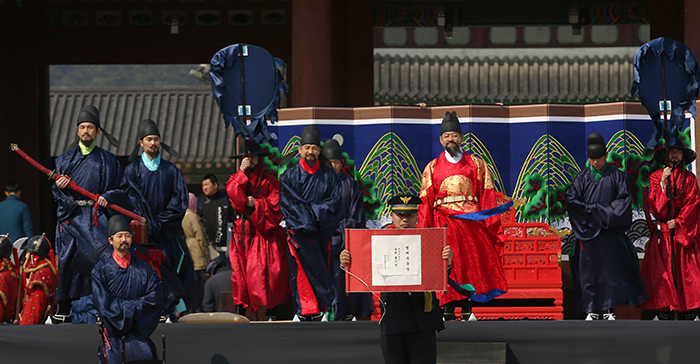
Officer Ryu Sigyeong from the Seoul Jongno Police Station holds up his certificate of appointment. He was appointed as an honorary chief royal gatekeeper during a ceremonial 'chief royal guard appointment ceremony' at Gyeongbokgung Palace.
"Protecting the palace is the same as protecting the country.”
So said the character of the king during a ceremonial appointment of the chief royal gatekeeper. The ceremony took place at the Hongyemun Gate of Gyeongbokgung Palace.
A "chief royal gatekeeper" is literally the highest person in charge of protecting the gate.
During Joseon times, the kings were considered to embody the nation itself and were the father of all the people. For this reason, the chief royal gatekeeper had the gravest of responsibilities to protect the palace where the king lived, as it was directly connected to the safety of the nation and of the people.
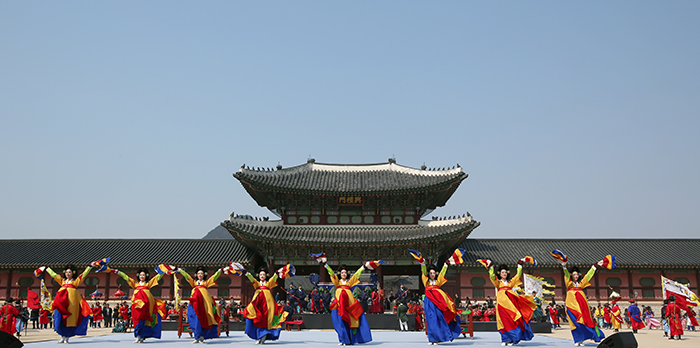
Dancers stage a performance in front of the Heungyemun Gate during a chief royal guard appointment ceremony.
King Yejong (1450-1469, r. 1468-1469) was a ruler who emphasized the importance of the role of the chief royal gatekeeper, an importance that remains even today.
One year after he ascended to throne, on May 18, 1469, King Yejong ordered that, “The gatekeepers who protect the gates of the royal palaces should be different from the ordinary soldiers who are in charge of managing the gates. From now on, we will appoint chiefs of royal gatekeepers, create an appropriate position and develop medals for them to receive, so that they will take the protection of the gates as their utmost responsibility.“
The reenactment of the appointment ceremony of the chief royal gatekeeper was based on records from the Joseon Wangjosillok, the "Annals of the Joseon Dynasty," from the first year of King Yejong’s reign concerning the placement of the chief royal gatekeeper system and formal appointments.
The ceremony featured a march of the king who presided over the appointment of the chief royal gatekeeper. He emphasized the importance of protecting the palace to the newly appointed chief. A modern-day police officer, Ryu Sigyeong from the Seoul Jongno Police Station, was appointed as the ceremonial chief royal gatekeeper during the ceremony.
By Jeon Han, Yoon Sojung
Korea.net Staff Writers
Photos: Jeon Han
hanjeon@korea.kr
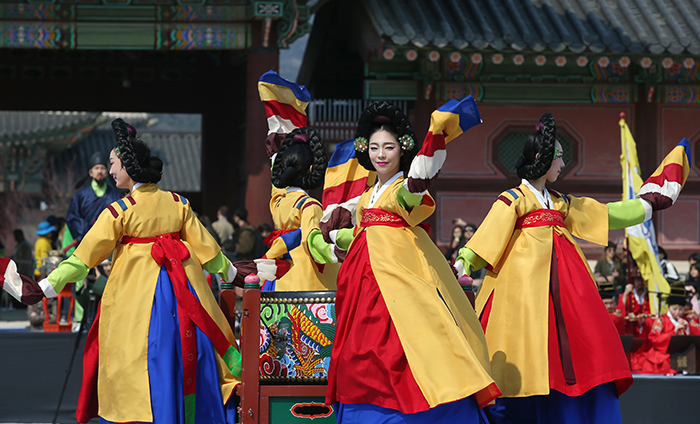
Performers from the Korea House stage a traditional drum dance, the mugomu, during the ceremony at Gyeongbokgung Palace.
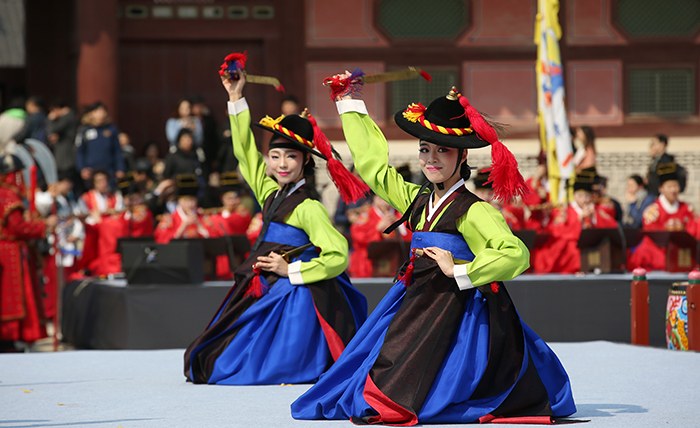
Dancers from the Korea House perform a traditional drum dance, the mugomu, during the ceremony at Gyeongbokgung Palace.
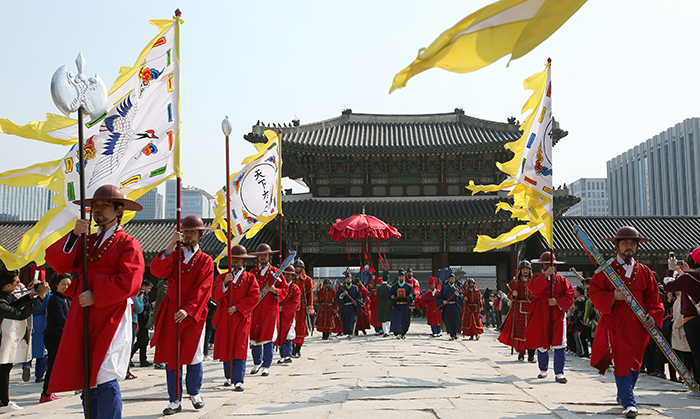
The king heads to Gangnyeongjeon Hall at Gyeongbokgung Palace as the gatekeeper changing ceremony ends.
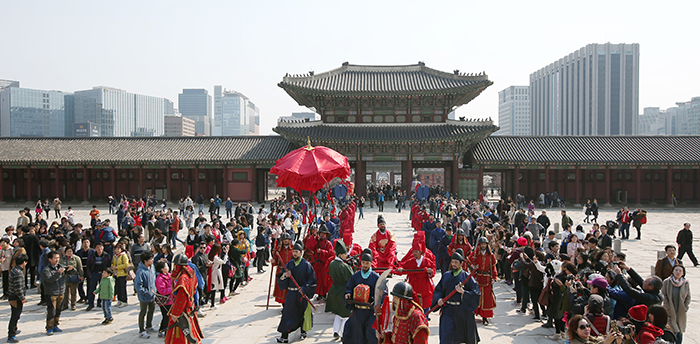
Tourists at Gyeongbokgung Palace watch the march of the king during the appointment ceremony for the royal gatekeepers in front of the Geunjeongjeon Hall on Mar. 27.